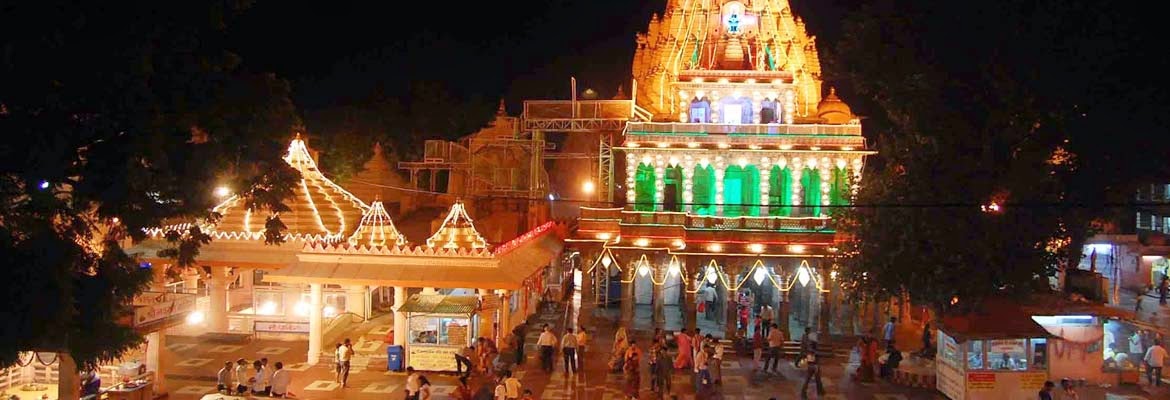Nageshwar Temple or Nagnath Temple is located on the route between
Gomati Dwarka and the Bait Dwarka Island on the coast of Saurashtra in
Gujarat. The Jyotirlinga enshrined in the Temple of Nagnath is known as
Nageshwar Mahadev and attracts thousands of pilgrims all round the year.
This powerful Jyotirlinga symbolizes protection from all poisons. It is
said that those who pray to the Nageshwar Linga become free of poison.
The Rudra Samhita sloka refers to Nageshwar with the phrase
′Daarukaavane Naagesham′.
Legend Behind Nageshwar Temple According to Shiv Purana, a Shiva devotee by name Supriya was attacked by a demon Daaruka while in a boat. The demon imprisoned him along with several others at his capital Daarukaavana where he resided with his wife Daaruki. Supriya advised all prisoners to recite the mantra ‘Aum Namaha Shivaya’. When Daruk came to know about this he ran to kill Supriya. Instantly Lord Shiva appeared in the form of a Jyotirlingam and vanquished the demon with the Paasupata Astram.
This Jyotirlinga manifestation of Shiva is worshipped as Nageswara. Two other sites in India, one near Audhgram near Purna in Andhra Pradesh and another near Almora in Uttar Pradesh also enshrine temples to Nageswara Jyotirlingam. According to the Shiv Purana, any one who ever with devotion reads the birth and greatness of this Jyotirlinga shall beget all material happiness and divine status in the end.
Structure of Nageshwar Temple Nageshwar Mahadev Sivalingam is facing South while the Gomugam is facing east. There is a story for this position. A devotee by name Naamdev was singing bhajans in front of the Lord. Other devotees asked him to stand aside and not hide the Lord. To this Naamdev asked them to suggest one direction in which the Lord does not exist, so that he can stand there. The enraged devotees carried him and left him on the southside. To their astonishment, they found that the Linga was now facing South with the Gomugam facing east.
Legend Behind Nageshwar Temple According to Shiv Purana, a Shiva devotee by name Supriya was attacked by a demon Daaruka while in a boat. The demon imprisoned him along with several others at his capital Daarukaavana where he resided with his wife Daaruki. Supriya advised all prisoners to recite the mantra ‘Aum Namaha Shivaya’. When Daruk came to know about this he ran to kill Supriya. Instantly Lord Shiva appeared in the form of a Jyotirlingam and vanquished the demon with the Paasupata Astram.
This Jyotirlinga manifestation of Shiva is worshipped as Nageswara. Two other sites in India, one near Audhgram near Purna in Andhra Pradesh and another near Almora in Uttar Pradesh also enshrine temples to Nageswara Jyotirlingam. According to the Shiv Purana, any one who ever with devotion reads the birth and greatness of this Jyotirlinga shall beget all material happiness and divine status in the end.
Structure of Nageshwar Temple Nageshwar Mahadev Sivalingam is facing South while the Gomugam is facing east. There is a story for this position. A devotee by name Naamdev was singing bhajans in front of the Lord. Other devotees asked him to stand aside and not hide the Lord. To this Naamdev asked them to suggest one direction in which the Lord does not exist, so that he can stand there. The enraged devotees carried him and left him on the southside. To their astonishment, they found that the Linga was now facing South with the Gomugam facing east.


















.jpg)




























